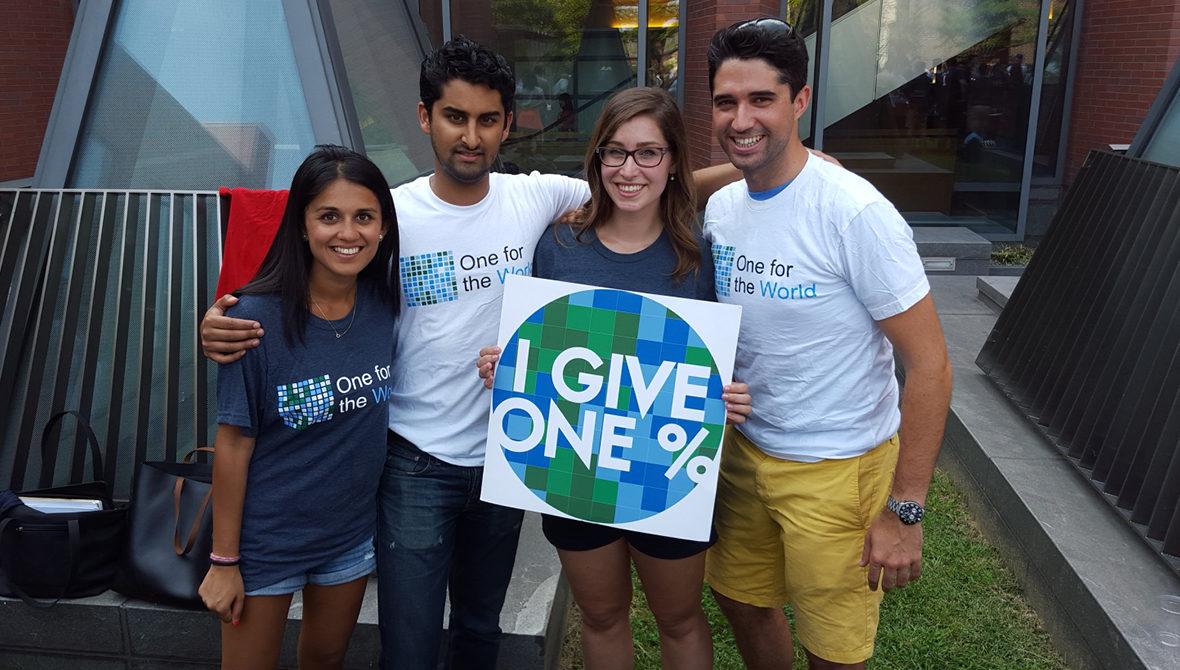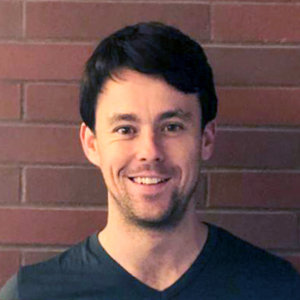Harnessing the Power of Young People’s Passions: What We’re Seeing at One for the World


Rep. John Lewis and Rev. C.T. Vivian have received deserved tributes from across the United States and the world since they passed away in July 2020. As civil rights icons, they embodied the fight for racial equality in the mid-20th Century. John Lewis was known as “the conscience of Congress” (Barrow & Taylor, 2020). Martin Luther King, Jr. described C.T. Vivian as “the greatest preacher ever to live” (Reyes, 2020, para. 13).
Reading about their incredible lives, I was struck by an aspect of their struggle which seems to be under-emphasized: they were so young. C.T. Vivian conducted his first sit-in protest at the age of 22. John Lewis (1998) helped lead the March on Washington in 1963 at age 23. He crossed the Edmund Pettus Bridge in Selma, Alabama, on “Bloody Sunday” in 1965 at age 25. Lewis also joined the first Freedom Rides, where he and his fellow riders wrote out their wills before going on protests because they genuinely believed they might be killed. Yet, they did it anyway, when they were only in their twenties.
It serves as a reminder of the power of young people’s activism. As the United States goes through a profound reckoning about race, health, and a host of political issues, the ability of young people to drive progress is a source of considerable hope.
I see the outstanding potential of young people every day in my role at One for the World, a movement of people changing charitable giving to end extreme poverty. In our six years of operation, we have so far recruited around 1,000 young volunteers and convinced several times that number to take our pledge to donate 1% or more of their income to the world’s most cost-effective charities, every month, for life.
We appeal to these unlikely donors by educating students and young professionals about effective giving and motivating them to channel their donations to organizations that will have the greatest impact.
It is important to note that we use the term “cost-effective” very intentionally and thoughtfully. One for the World partners with GiveWell, the world’s leading charity evaluator, to compile an annual list of charities that we recommend to those who are looking to make charitable donations or to take the 1% pledge. (Indeed, we’re partly funded by GiveWell and so work with them closely on an annual basis.) We identify these organizations based on extensive research and analysis. Every one of the charities we jointly recommend has incredibly strong evidence of effectiveness, offers unusual transparency, and has a demonstrable need for more funding. You can learn more about our determination process here.
In theory, One for the World can appeal to anyone. However, the vast majority of our several thousand donors are under the age of 35 and we do nearly all our outreach to current students or recent graduates. The following are a few themes that we think have worked well for us, and ideas we’d like to try.
A disruptive approach, rejecting the status quo, seems to be attractive to young people. We think it appeals to a sense of doing something different and exciting; the idea their generation might do better than the ones before it by re-examining old assumptions.
“A disruptive approach, rejecting the status quo, seems to be attractive to young people. We think it appeals to a sense of doing something different and exciting; the idea their generation might do better than the ones before it by re-examining old assumptions.”
Young people are famously early adopters of disruptive technology (Kennedy & Funk, 2016). It seems to apply to the social movements they support as well.
For example, One for the World’s message is disruptive. As part of the effective giving movement, we are ultimately making some pretty pointed comments about traditional charitable giving. These include the following:
The point of this article is not to argue these points — although we really believe that they hold true and we use them constantly as guiding lights. The point is to observe that this seems appealing to our demographic. There are countless other examples of this, from Bernie Sanders’ campaigns in the Democratic primary to the Occupy Wall Street movement. They gained significant traction by rejecting the assumption that things are a certain way and can’t be changed.
Last summer, I read some fascinating reporting on two of the biggest social movements of our time: the Women’s March on Washington and Black Lives Matter. In each case, they use a decentralized, community-level model, with limited hierarchy. Consequently, they empower local leaders to make decisions and feel ownership over their activism.
Almost all of One for the World’s outreach is done by unpaid young people who run groups of volunteers called ‘chapters.’ They organize talks, do face-to-face outreach, use smart marketing to raise awareness, and motivate their peers to take our pledge. Any one of these volunteers is only two steps away from me as executive director, and all our staff are on Slack every day for instant communication.
Alongside this, everyone on our team except me has led a chapter before joining — so volunteers can see that outstanding performance at a grassroots level can lead to progression into full-time, paid work.
It seems there is something attractive about giving young people autonomy and empowering them to make their mark. Our most successful Facebook advert for recruiting new chapter leaders asks “do you want to make an impact, but aren’t sure how?” Every year, hundreds of young volunteers say “yes” to that question.
I recently learned that the electric vehicle and clean-energy company, Tesla, defines its mission as “accelerating the world’s transition to sustainable energy.”
Whatever your views on Tesla’s CEO Elon Musk, studies suggest that younger generations are far more convinced of the existence and urgency of climate change than older generations (Tiseo, 2019). They want to get involved in combatting the effects of climate change — so is it any wonder that recent engineering graduates really want to work for this company?
At One for the World, we ask recent graduates and professionals to take a lifelong pledge to donate some of their income, and we ask them to do it in their twenties. This is a point where they likely have low-to-no income, no savings, insecurity about their career, and are often facing a mountain of student debt. Why would they agree?
We think this is a question of values. Something in that clarity resonates with our members in a profound way. As one respondent to a recent member survey said, “I believe giving is part of my social contract.” We appeal to their values and not much else, and it seems to work.
“We appeal to their values and not much else, and it seems to work.”
We just think everyone should give, and that they should give where their money will make the biggest possible difference. We don’t take any fee for our services; aside from the processing fees of our credit card payment and donations software, everything is sent on to the charities (our operating costs are covered by separate individual and institutional donors). We don’t offer fancy membership perks.
Another thing we tried to borrow from Tesla: have an image people want to associate with. (You could call this “try to be cool” — but that would be deeply uncool.)
Much like the best political campaigns’ practices (Obama’s use of social media and the internet in 2008, or Elizabeth Warren’s selfie lines, offering one-on-one photos with supporters), we strive to be relevant and attractive in the space that really matters to our members — online.
We invest in being digitally native, from our checkout process to our communication strategy; and our concept makes a lot of sense when you explain it to new people. We try to get every new pledger to take a photo with a sign that says, “I GIVE ONE %” and share it on their Instagram account and on ours. Social signaling is a very powerful part of motivating our members to give.
Increasing numbers of our members are listing their One for the World membership on their LinkedIn profiles because they want colleagues and employers to know they are part of the movement.
I don’t want this article to suggest that we are the last word on movement building and outreach to young people.
We still have only a few thousand members and moved only a few hundred-thousand dollars to our charities this year — we have ambitions to be 10 times bigger. We want to be better at everything — recruiting new donors, building new chapters, having a lively and attractive brand, and moving money to our charities.
Simultaneously, COVID-19 has completely stopped our usual outreach method and cancellations are going up, as graduate jobs disappear and the world economy enters a deep recession. There are rough seas ahead — not only for us, but most especially for the beneficiaries of our recommended charities, where coronavirus is both a huge health risk and causing massive economic damage (World Bank, 2020).
The one thing I am certain of, though, is that young people’s passion will be at the heart of our future success; and we can’t wait to let them drive the next stage of One for the World.

Barrow, B., & Taylor, A. (2020, July 27). John Lewis hailed as the ‘conscience’ of Congress. Daily Hampshire Gazette. https://www.gazettenet.com/Pelosi-others-hail-John-Lewis-as–conscience–of-Congress-35431247
Fiorillo, S. (2021, Feb. 19). The average income in the U.S. TheStreet. https://www.thestreet.com/personal-finance/average-income-in-us-14852178
GiveWell. (n.d.a). Your dollar goes further overseas. https://www.givewell.org/giving101/Your-dollar-goes-further-overseas
GiveWell. (n.d.b). Evidence action’s Deworm the World Initiative. https://www.givewell.org/charities/deworm-world-initiative#Summary
Kennedy, B., & Funk, C. (2016, July 12). 28% of Americans are ‘strong’ early adopters of technology. Pew Research Center. https://www.pewresearch.org/fact-tank/2016/07/12/28-of-americans-are-strong-early-adopters-of-technology/
Lewis. J. (1998). Interview by Rita Braver. From the archive: John Lewis and the bridge. [Television broadcast]. Sunday Morning, CBS News. https://www.cbsnews.com/news/from-the-archive-john-lewis-and-the-bridge/
PND by Candid. (2018, May 3). Recurring donors 440 percent more valuable than ‘one-off’ donors. https://philanthropynewsdigest.org/news/recurring-donors-440-percent-more-valuable-than-one-off-donors
Reyes, L. (2020, July 22). C.T. Vivian was a giant figure in the civil rights movement: 5 things you may not have known about him. USA Today. https://www.usatoday.com/story/news/nation/2020/07/22/what-to-know-about-civil-rights-leader-ct-vivian/5472850002/
Salaryexplorer. (2021). Average salary in Ethiopia 2021. http://www.salaryexplorer.com/salary-survey.php?loc=69&loctype=1
Tiseo, I. (2019, December 5). U.S. concerns about climate change by age group 2015–2018. https://www.statista.com/statistics/492507/concerns-about-climate-change-united-states-by-age-group/
Todd, B., & 80,000 Hours. (2017, August). Is it fair to say that most social programmes don’t work? https://80000hours.org/articles/effective-social-program/
The World Bank. (2011). Adjusted net national income per capita (current US$). Retrieved March 1, 2021 from https://data.worldbank.org/indicator/NY.ADJ.NNTY.PC.CD?most_recent_value_desc=false
The World Bank. (2020, June 8). Projected poverty impacts of COVID-19 (coronavirus). https://www.worldbank.org/en/topic/poverty/brief/projected-poverty-impacts-of-COVID-19